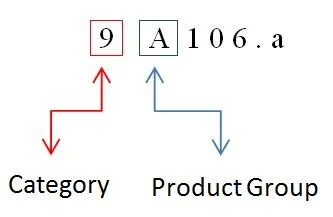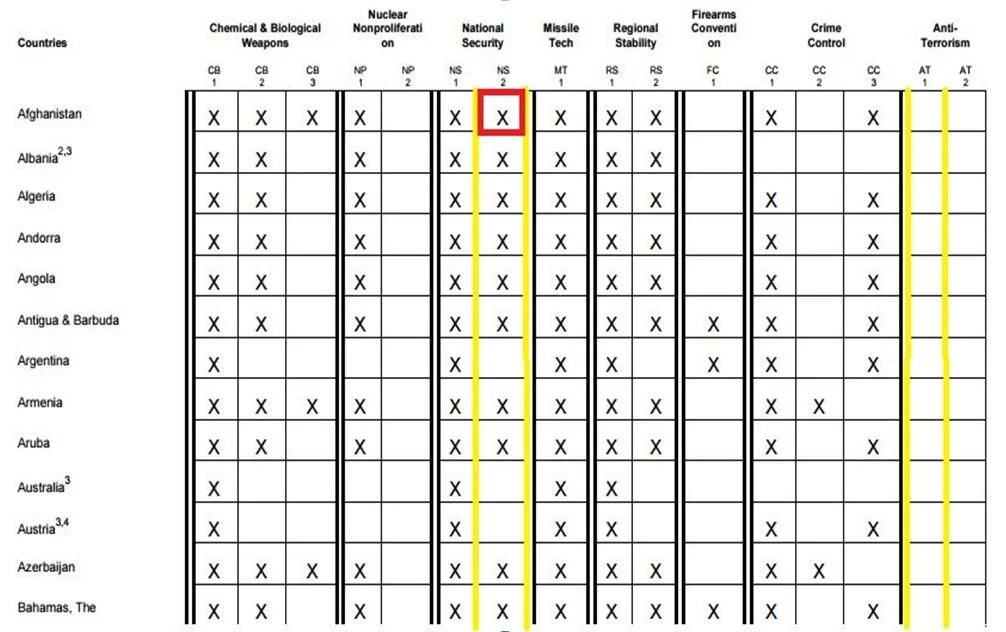The Bureau of Industry and Security’s Export Administration Regulations. Does the EAR apply to you?
Have you every worried that your company might accidentally become an international arms dealer or engage in chemical weapons trafficking? If your company is exporting without the proper license from the Bureau of Industry and Security then it could happen to you. For example, sending titanium to India without a license violates national security regulations, shipping tungsten cylinders to the Dominican Republic may violate a nuclear non-proliferation treaty, and any company that sends machine tools to Brazil or Russia might be a threat to national security.
The Bureau of Industry and Security’s Export Administration Regulations (“EAR”) are intended to keep technology and sensitive items away from individuals that are hostile to the United States. These regulations include controls designed to stem the proliferation of weapons of mass destruction and controls designed to limit the military and terrorism support capability of certain countries. However, the EAR is incredibly broad. The definition of “items subject to the EAR” includes, among other things, all U.S. origin items wherever located. Because the regulation is so broad, a number of seemingly innocuous items may be subject to control without the exporting company ever realizing. The EAR is also confusingly complex which makes it difficult for most companies to determine whether they are shipping innocuous hose pipes or hose pipes that are also considered missile components. A company that fails to follow the EAR may be subject to fines and even jail time for willful violations.
In order to tackle this problem, you must first figure out whether your company has a problem. With that in mind, this guide was created to help companies determine whether they need to look into licensing their exports and imports to comply with the EAR.
Does the EAR apply to you?
Step 1. Does your item go outside the United States?
At its core, the EAR is meant to address exports from the United States. However, it also covers certain actions that you might not regard as an “export.” For example, the release of technology to a foreign national in the United States through demonstration or oral briefing is deemed an export. Other examples of exports under the EAR include the return of foreign equipment to its country of origin after repair in the United States, shipments that pass through the United States, and the electronic transmission of non-public data that will be received abroad. There are even regulations that cover the involvement of “United States persons” anywhere in the world when they engage in exports of foreign-origin items, or in providing services or support for exports.
It is better to be safe than deemed a national security risk, so Step 1 is are you dealing with any products that go outside the United States? If the answer is no then the EAR regulations should not apply; otherwise, move on to step 2.
Step 2. Is your item covered?
In order to answer this question, you will need to consult the Commerce Control List (“CCL”) which is contained in Supplement No 1 to 15 CFR § 774. Unfortunately the CCL is too impractical to simply browse. Instead, you will first need to check to see if the item in question has an Export Control Classification Number (“ECCN”) on the Commerce Control List Index.
On the left side of the Index are covered items in alphabetical order, and on the right side is the item’s corresponding ECCN. The ECCN is a code that will help you find your item’s place in the CCL. The CCL is divided into ten broad categories, and each category is further subdivided into five product groups. The first number of the ECCN corresponds to one of the ten categories which are:
Category 0: Nuclear Materials, Facilities and Equipment
Category 1: Materials, Chemicals, Microorganisms, and Toxins
Category 2: Materials Processing
Category 3: Electronics Design, Development, and Production
Category 5: Part 1: Telecommunications Part 2: Information Security
Category 6: Sensors and Lasers
Category 7: Navigation and Avionics
Category 9: Propulsion Systems, Space Vehicles, and Related Equipment
The second character in the ECCN is a letter which corresponds to one of the five product groups which are:
> Systems, Equipment and Components
> Test, Inspection and Production Equipment
> Material
> Software
> Technology
For example, the first entry on the CCL Index is, “Ablative liners, thrust or combustion chambers,” and its ECCN is 9A106.a and 9A619.c, e. Based on this ECCN, Ablative liners, thrust or combustion chambers are Systems, Equipment and Components of Propulsion Systems, Space Vehicles and Related Equipment, and they can be found in Category 9 of the CCL.
Step 3. Why is your item controlled?
Once you have identified the item’s ECCN, look it up in the CCL (each category of the CCL is linked above in Step 2). Each item’s place on the list can be found based upon the ECCN. For example, the first item in Category 1 has a ECCN of 1A001 and the last item in Category 1 has an ECCN of 1E994.
The reasons for control of an item are listed under the heading of each ECCN. There are eight different categories of reasons for control. Each control is represented by a two character abbreviation. The reasons for control are: CB Chemical and Biological weapons, NP Nuclear Nonproliferation, NS National Security, MT Missile Tech, RS Regional Stability, FC Firearms Convention, CC Crime Control, and AT Anti-Terrorism. CB and CC have three levels of control. NP, NS, RS and AT have two levels of control. MT and FC have only one level of control.
The heading for each ECCN will explain whether a particular reason for control applies to the entire CCL entry or whether it only applies to certain items in the entry. The heading will also denote the level of control by identifying whether the control is NS column one, two or three, and AT column one or two, etc.
For example, ECCN 1A001 has two reasons for control NS and AT. The entire entry is NS level 2 because the heading reads, “NS applies to entire entry NS Column 2.” The entire entry is AT level 1 because the heading reads, “AT applies to entire entry AT column 1.”
Step 4. Does the control apply in the export’s destination?
Once you know the reason the item is controlled you must next determine whether the control applies to the foreign country where it is being exported or reexported. To make this determination you must consult the Commerce County Chart. The Country Chart is a list of the countries of the world in alphabetical order next to columns for each of the levels of control. By consulting the County Chart you can determine whether there is a control for your item in a particular country. For example, ECCN 1A001 has controls NS Column 2 and AT Column 1.
There is a NS2 control for items with ECCN 1A001 in Afghanistan, but not in Argentina. Therefore, there are no restrictions on sending items with ECCN 1A001 to Argentina. However, a company needs a license to send the item to Afghanistan or to the Bahamas.
Unfortunately, determining whether a control applies to a particular item in a particular country is only the tip of the iceberg. There are many more additional regulations regarding licensing and approval of agreements for export. Companies should consult an attorney to assist with these additional regulations.
The EAR has ten separate general prohibitions. The above analysis only relates to the first three prohibitions. Any United States Person that has anything to do with exports or reexports should read and understand the rest of the EAR regulations to ensure that they are in compliance. Companies should consult an attorney to figure out how to comply with all federal regulations, especially the EAR. Nevertheless, the above guide should give companies the tools they need in order to figure out when they need to consult an attorney to ensure their exports are in compliance.
If you have questions regarding EAR, please e-mail Dale Markowitz at dmarkowitz@tddlaw.com, Andrew Yarger at ayarger@tddlaw.com or call them at (440) 285-2242.


